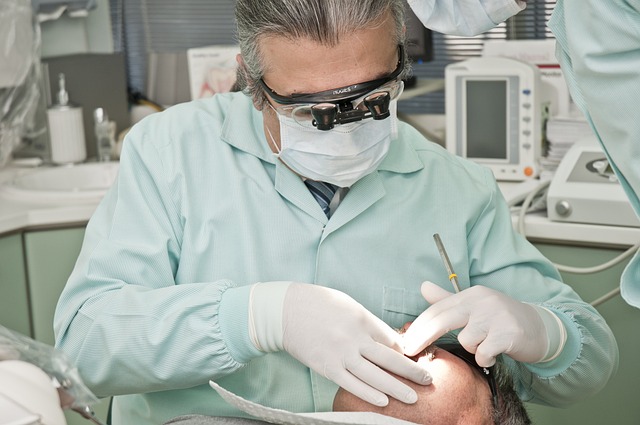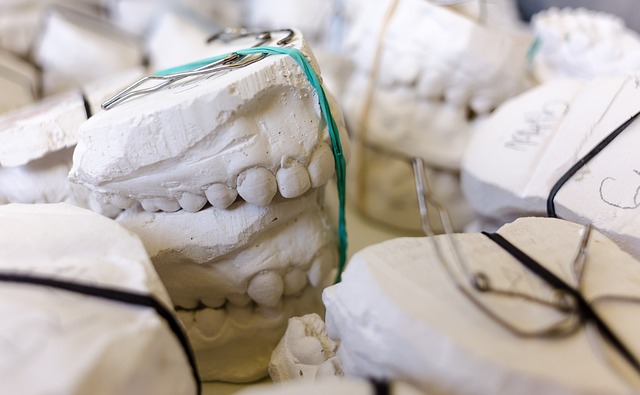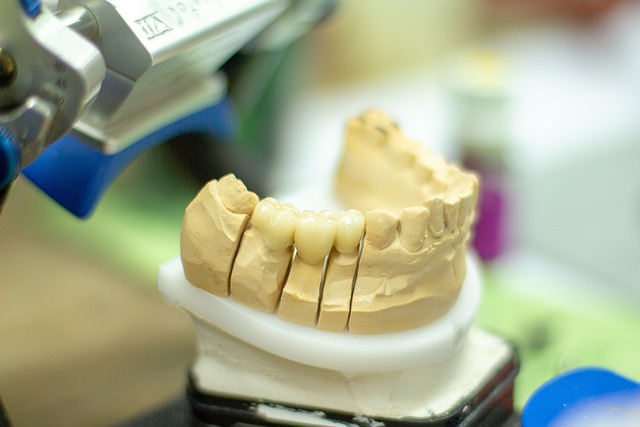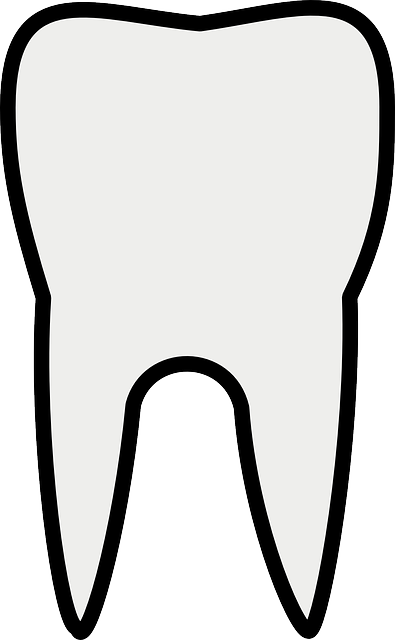In Liverpool, understanding the tooth extraction cost and subsequent restorative treatments like fillings or crowns is essential for managing oral health effectively. Fillings made of materials such as amalgam, composite resin, or gold are suitable for various extents of decay, with costs varying by material choice and treatment complexity. Crowns, which are custom-fitted caps to restore teeth' function and appearance, are necessary when significant decay or large fillings are present. The crown process spans two visits: the first for tooth preparation and impression, and the second for placement. Patients must weigh their options between less expensive fillings for smaller cavities and more costly crowns for larger ones, considering their oral health needs, financial situation, and the local market dynamics in Liverpool. Dental insurance or NHS entitlements can influence these costs, with emergency extractions typically covered but non-emergency procedures like fillings potentially incurring higher private sector costs. Consulting with dental professionals for a tailored treatment plan is crucial for informed decision-making on the balance between tooth extraction cost Liverpool and associated filling expenses, ensuring both oral health care needs and financial considerations are met. Post-treatment care includes following dietary and hygiene recommendations to maintain the longevity of the restoration and ensure overall dental health.
When confronting dental decay, understanding the options available is paramount. This article delves into the realm of restorative dentistry, focusing on the essential role of fillings and crowns in preserving oral health. We explore the criteria for choosing between a filling or a crown, shedding light on the cost implications of tooth extraction and subsequent fillings in Liverpool, particularly when considering long-term dental health outcomes. Additionally, we examine the various types of materials used in modern dentistry for these restorations, offering insights into the step-by-step procedure for cavity treatment. With a comprehensive look at post-procedure care, readers will be well-equipped to make informed decisions about their oral health needs.
- Understanding Dental Fillings and Crowns: The Basics
- Assessing the Need for a Filling vs. Crown Placement
- Cost Analysis of Tooth Extraction and Subsequent Fillings in Liverpool
- Types of Fillings and Crowns Used in Dentistry Today
- Step-by-Step Procedure for Cavity Treatment with Fillings or Crowns
- Post-Procedure Care and Maintenance for Long-Term Dental Health
Understanding Dental Fillings and Crowns: The Basics

Dental fillings and crowns are restorative dental procedures that play a crucial role in maintaining oral health. When a tooth experiences decay or structural damage, a filling is used to restore its function and integrity. Fillings can be composed of various materials, including amalgam, composite resin, or gold, each with its own durability and aesthetic properties. The choice of material often depends on factors such as the size of the cavity, its location in the mouth, and the patient’s preferences and dental insurance coverage.
Crowns, on the other hand, are custom-made caps that cover the entire surface of a damaged tooth. They provide additional strength to teeth that have been significantly weakened or restored with large fillings. A crown can also restore a tooth’s shape, size, strength, and appearance, improving its functionality and aesthetic appeal. The process of obtaining a crown typically involves two visits to a dental clinic; the first for preparing the tooth and taking impressions, and the second for cementing the final crown in place. For patients seeking tooth extraction cost in Liverpool or other restorative treatments, it’s essential to consult with a qualified dentist who can provide personalized care based on individual needs and budget considerations.
Assessing the Need for a Filling vs. Crown Placement

When a tooth has been compromised by decay or damage, determining the most effective restorative solution is paramount. Dental professionals carefully assess the extent of the damage to guide their decision between filling placement and crown installation. A filling is typically suitable for smaller cavities where the remaining tooth structure is robust enough to support the restoration. The cost of fillings can vary, with factors such as the type of filling material used and the number of visits required influencing the overall expense. In Liverpool, patients can find a range of dental practices offering competitive tooth extraction cost for fillings, reflecting the local market conditions.
Conversely, when a larger portion of the tooth is affected or when the remaining structure is unstable, a crown might be the more appropriate choice. A crown not only restores function but also ensures the tooth’s integrity and aesthetic appeal. The procedure for crown placement is more involved and therefore comes with a higher cost compared to fillings. Patients considering crowns in Liverpool should anticipate a comprehensive evaluation by their dentist to determine the most suitable treatment plan, taking into account both their oral health needs and budget considerations. The decision between a filling and a crown is a nuanced one that requires professional dental expertise to ensure the best long-term outcome for the patient’s oral health.
Cost Analysis of Tooth Extraction and Subsequent Fillings in Liverpool

When considering dental procedures, tooth extraction and subsequent fillings can represent a significant investment in one’s oral health. In Liverpool, the cost for such treatments varies based on several factors, including the complexity of the procedure, the choice of dental clinic, and whether a patient has dental insurance or NHS coverage. Tooth extraction cost in Liverpool is not fixed; it can range from minimal fees for a straightforward extraction to higher costs for more complex extractions that may require surgical intervention. Following the extraction of a tooth, the subsequent cost of fillings will also depend on the extent of the cavity or damage and the type of filling material chosen, such as amalgam, composite, or gold.
Patients in Liverpool have access to both NHS and private dental services, each offering different financial considerations. The NHS provides certain treatments at reduced cost or free of charge for qualifying individuals, including emergency extractions. For elective procedures like fillings, patients are more likely to incur costs that are higher in the private sector but may offer more flexible appointment times and advanced treatment options. It’s advisable for patients to compare quotes from various dental practices and consider their specific dental needs and financial circumstances when evaluating tooth extraction cost Liverpool and subsequent filling expenses. Understanding the cost structure can help individuals make informed decisions about their oral healthcare, ensuring they receive necessary treatments while managing their budget effectively.
Types of Fillings and Crowns Used in Dentistry Today

In contemporary dentistry, the restoration of teeth that have been damaged by decay or fracture is achieved through the use of various types of fillings and crowns. Composite fillings, crafted from a mixture of plastic resin and glass or quartz, are widely used due to their ability to blend seamlessly with natural tooth color, making them an aesthetic choice for front teeth. Amalgam fillings, traditionally made from a combination of mercury, silver, tin, and copper, remain a robust option for less visible teeth due to their durability. Gold fillings offer a high degree of durability and resistance to wear and tear but are seldom used due to their appearance.
Crowns, on the other hand, serve as a cap that is placed over a tooth to restore its shape, size, strength, and appearance. Porcelain fused to metal (PFM) crowns are popular for their strength and natural-looking finish. All-ceramic or all-porcelain crowns provide a more natural color match than any other crown type and are highly suitable for individuals with metal allergies. Zirconia crowns, particularly strong and white, have gained popularity due to their longevity and aesthetic appeal. For those seeking the most natural-looking restoration, all-ceramic crowns made from zirconia are often the preferred choice. The cost of these procedures, including tooth extraction costs in Liverpool, varies depending on the type of material used and the complexity of the treatment required. It’s advisable to consult with a dental professional to determine the most suitable option for your specific dental needs and budget.
Step-by-Step Procedure for Cavity Treatment with Fillings or Crowns

When a cavity has formed in a tooth, it’s crucial to address it promptly to prevent further decay and potential infection. The treatment process for filling or crowning a tooth involves several precise steps, each aimed at restoring the tooth to its functional and aesthetic state. Initially, the affected tooth is cleaned to remove any bacteria or debris. Local anesthesia is administered to ensure patient comfort during the procedure. Once numb, the dentist carefully removes all decayed material from the cavity using specialized tools. This preparation ensures a secure bond for the filling or crown material.
For small to moderate cavities, a composite filling is often used. The dentist selects a composite material that matches the natural color of the tooth for optimal aesthetics. The filling is then precisely applied in layers, with each layer hardened under a special light before the next is added. This process is repeated until the cavity is completely filled and the tooth’s structure is restored. For larger cavities or teeth that have significant structural damage, a crown may be the more suitable option. The dentist will shape the remaining tooth structure to accommodate the crown. An impression of the tooth is taken and sent to a dental lab where the custom-made crown is crafted. A temporary crown might be placed on the tooth to protect it until the permanent crown is ready. Once the permanent crown is returned from the lab, it is securely cemented into place, restoring both the function and appearance of the tooth.
For patients in Liverpool considering cavity treatment, understanding the costs associated with tooth extraction cost Liverpool can be an important factor. The expense can vary based on the type of filling or crown used, the extent of the procedure, and the dental practice’s rates. It’s advisable to consult with a dentist for a detailed evaluation and to discuss financial aspects, including potential insurance coverage or payment plans that can help manage the costs effectively.
Post-Procedure Care and Maintenance for Long-Term Dental Health

Following a procedure to fill cavities with fillings or crowns, post-procedure care is paramount for achieving long-term dental health. Patients should adhere strictly to their dentist’s recommendations, which often include a soft diet for the first few days to avoid discomfort around the treated area. Pain management medications, such as over-the-counter analgesics, can be used as directed to alleviate any pain or discomfort. It is crucial to maintain excellent oral hygiene practices; gentle brushing and flossing around the restored tooth can prevent future decay and ensure the longevity of the filling or crown. Regular dental check-ups are essential for monitoring the condition of fillings and crowns over time, as they can wear down or even fall out if not properly maintained. In cases where a patient has undergone tooth extraction and requires a filling or crown, it’s important to discuss the associated costs with a dentist in Liverpool, as prices may vary. The cost of tooth extraction in Liverpool can be influenced by several factors, including the complexity of the procedure and the dental practice’s fees. Patients should consider their options for dental insurance or payment plans to manage these expenses effectively. Understanding the costs upfront allows patients to make informed decisions about their dental care and maintain their oral health long-term.
When addressing dental issues such as cavities, the choice between fillings or crowns is a critical decision impacting both oral health and finances. This article has delved into the essential aspects of dental fillings and crowns, guiding readers through the assessment process for determining the most suitable restoration method. Notably, the cost analysis for tooth extraction and subsequent fillings in Liverpool highlights the importance of informed decision-making. With a comprehensive look at modern filling and crown types, coupled with practical procedural insights, individuals can make well-informed choices about their dental care options. Proper post-procedure care is paramount for maintaining optimal oral health. By understanding these factors, patients in Liverpool can navigate their dental care needs with confidence, ensuring they receive the best possible treatment within their budget.
